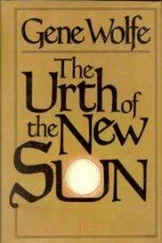Tom Wolfe - The Right Stuff
Здесь есть возможность читать онлайн «Tom Wolfe - The Right Stuff» весь текст электронной книги совершенно бесплатно (целиком полную версию без сокращений). В некоторых случаях можно слушать аудио, скачать через торрент в формате fb2 и присутствует краткое содержание. Жанр: Современная проза, на английском языке. Описание произведения, (предисловие) а так же отзывы посетителей доступны на портале библиотеки ЛибКат.
- Название:The Right Stuff
- Автор:
- Жанр:
- Год:неизвестен
- ISBN:нет данных
- Рейтинг книги:3 / 5. Голосов: 1
-
Избранное:Добавить в избранное
- Отзывы:
-
Ваша оценка:
- 60
- 1
- 2
- 3
- 4
- 5
The Right Stuff: краткое содержание, описание и аннотация
Предлагаем к чтению аннотацию, описание, краткое содержание или предисловие (зависит от того, что написал сам автор книги «The Right Stuff»). Если вы не нашли необходимую информацию о книге — напишите в комментариях, мы постараемся отыскать её.
The Right Stuff — читать онлайн бесплатно полную книгу (весь текст) целиком
Ниже представлен текст книги, разбитый по страницам. Система сохранения места последней прочитанной страницы, позволяет с удобством читать онлайн бесплатно книгу «The Right Stuff», без необходимости каждый раз заново искать на чём Вы остановились. Поставьте закладку, и сможете в любой момент перейти на страницу, на которой закончили чтение.
Интервал:
Закладка:
The Soviet program gave off an aura of sorcery. The Soviets released practically no figures, pictures, or diagrams. And no names; it was revealed only that the Soviet program was guided by a mysterious individual known as "the Chief Designer." But his powers were indisputable! Every time the United States announced a great space experiment, the Chief Designer accomplished it first, in the most startling fashion. In 1955 the United States announces plans to launch an artificial earth satellite by early 1958. The Chief Designer startles the world by doing it in October 1957. The United States announces plans to send a satellite into orbit around the sun in March of 1959. The Chief Designer does it in January 1959. The fact that the United States went ahead and successfully conducted such experiments on schedule, as announced, impressed no one—and Americans least of all. In a marvelously morose novel of the future called We , completed in 1921, the Russian writer Evgeny Zamyatin describes a gigantic "fire-breathing, electric" rocket ship that is poised to "soar into cosmic space" in order to "subjugate the unknown beings on other planets, who may still be living in the primitive, condition of freedom"—all this in the name of "the Benefactor," ruler of "the One State." This omnipotent space ship is called the Integral, and its designer is known only as "D-503, Builder of the Integral." In 1958 and early 1959, as magical success followed magical success, that was the way Americans, the leaders even more so than the followers, began to look on the Soviet space program. It was a thing of misty but stupendous dimensions… the mighty Integral… with an anonymous but omnipotent Chief Designer… Builder of the Integral. Within the federal government and throughout the education bureaucracies rose a cry for a complete overhauling of American education in order to catch up with the new generation, the new dawn, of socialist scientists, out of which had come geniuses like the Chief Designer (Builder of the Integral!) and his assistants.
The panic was greatly exacerbated by the figure of Nikita Khrushchev, who now emerged as the new Stalin in terms of his autocratic rule of the Soviet Union. Khrushchev was a type whom Americans could readily understand and fear. He was the burly, hearty, crude but shrewd farmboy capable of grinning with barnyard humor one moment and of tormenting small animals the next. After Sputnik 1 Khrushchev became the wicked master of mocking the United States for its incompetence. Two months after Sputnik 1 the Navy tried to launch the first American satellite with a Vanguard rocket. The first nationally televised countdown began… "Ten, nine, eight…" Then… "Ignition!" A mighty surge of noise and flames. The rocket lifts—some six inches. The first stage, bloated with fuel, explodes, and the rest of the rocket sinks into the sand beside the launch platform. It appears to sink very slowly, like a fat old man collapsing into a Barcalounger. The sight is absolutely ludicrous, if one is in the mood for a practical joke. Oh, Khrushchev had fun with that, all right! This picture—the big buildup, the dramatic countdown, followed by the exploding cigar—was unforgettable. It became the image of the American space program. The press broke into a hideous cackle of national self-loathing, with the headline KAPUTNIK! being the most inspired rendition of the mood.
The rocket pilots at Edwards simply could not understand what sort of madness possessed everybody. They watched in consternation as a war effort mentality took over. Catch up! On all fronts! That was the imperative. They could scarcely believe the outcome of a meeting held, in Los Angeles in March of 1958. This was an emergency meeting ( what emergency?) of government, military, and aircraft industry leaders to discuss the possibility of getting a man into space before the Russians. Suddenly there was no longer time for orderly progress. To put an X-15B or an X-20 into orbit, with an Edwards rocket pilot aboard, would require rockets that were still three or four years away from delivery. So a so-called quick and dirty approach was seized upon. Using available rockets such as the Redstone (70,000 pounds of thrust) and the just-developed Atlas (367,000 pounds), they would try to launch not a flying ship but a pod, a container, a capsule , with a man in it. The man would not be a pilot; he would be a human cannonball. He would not be able to alter the course of the capsule in the slightest. The capsule would go up like a cannonball and come down like a cannonball, splashing into the ocean, with a parachute to slow it down and spare the life of the human specimen inside. The job was assigned to NACA, the National Advisory Committee for Aeronautics, which was converted into NASA, the National Aeronautics and Space Administration. The project was called Project Mercury.
The capsule approach was the brainchild of a highly regarded Air Force research physician, Brigadier General Don Flickinger. The Air Force named it the MISS project, for "man in space soonest." The man in the MISS capsule would be an aero-medical test subject and little more. In fact, in the first flights, as Flickinger envisioned it, the capsule would contain a chimpanzee. Mercury was a slightly modified version of MISS, and so naturally enough Flickinger became one of the five men in charge of selecting Project Mercury's astronauts, as they would be called. The fact that NASA would soon be choosing men to go into space had not been made public, but Scott Crossfield was aware of it. Shortly after the Sputnik 1 launching, Crossfield, Flickinger, and seven others had been named to an emergency committee on "human factors and training" for space flight. Crossfield had also worked closely with Flickinger when he was testing pressure suits at Wright-Patterson Air Force Base in preparation for the X-15 project. Now Crossfield approached Flickinger and told him he was interested in becoming an astronaut. Flickinger liked Crossfield and admired him. And he told him: "Scotty, don't even bother applying, because you'll only be turned down. You're too independent." Crossfield was the most prominent of the rocket pilots, now that Yeager was no longer at Edwards, and he had as well developed an ego as any of Edwards' fabled jocks, and he was one of the most brilliant of all the pilots when it came to engineering. Flickinger seemed to be telling him that Project Mercury just wasn't suited for the righteous brethren of yore, the veterans of those high desert rat-shack broomstick days when there were no chiefs and no Indians and the pilot huddled in the hangar with the engineer and then went out and took the beast up and lit the candle and reached for the stars and rode his chimney and landed it on the lake bed and made it to Pancho's in time for beer call. When Flickinger explained to him that the first flight of the Mercury system would be made by a chimpanzee… well, Crossfield wasn't even particularly interested any more. Nor were most of the other pilots who were in line to fly the X-15. A monkey's gonna make the first flight . That was what you started hearing. Astronaut meant "star voyager," but in fact the poor devil would be a guinea pig for the study of the effects of weightlessness on the body and the central nervous system. As the brethren knew, NASA's original civil-service job specifications for Mercury astronaut did not even require that the star voyager be a pilot of any description whatsoever. Just about any young male college graduate with experience in a physically dangerous pursuit would do, so long as he was under five feet eleven and could fit into the Mercury capsule. The announcement calling for volunteers did mention test pilots as being among the types of men who might qualify, but it also mentioned submarine crew members, parachute jumpers, arctic explorers, mountain climbers, deep sea divers, even scuba divers, combat veterans, and, for that matter, mere veterans of combat training, and men who had served as test subjects for acceleration and atmospheric pressure tests, such as the Air Force and Navy had been running. The astronaut would not be expected to do anything; he only had to be able to take it.
Читать дальшеИнтервал:
Закладка:
Похожие книги на «The Right Stuff»
Представляем Вашему вниманию похожие книги на «The Right Stuff» списком для выбора. Мы отобрали схожую по названию и смыслу литературу в надежде предоставить читателям больше вариантов отыскать новые, интересные, ещё непрочитанные произведения.
Обсуждение, отзывы о книге «The Right Stuff» и просто собственные мнения читателей. Оставьте ваши комментарии, напишите, что Вы думаете о произведении, его смысле или главных героях. Укажите что конкретно понравилось, а что нет, и почему Вы так считаете.











